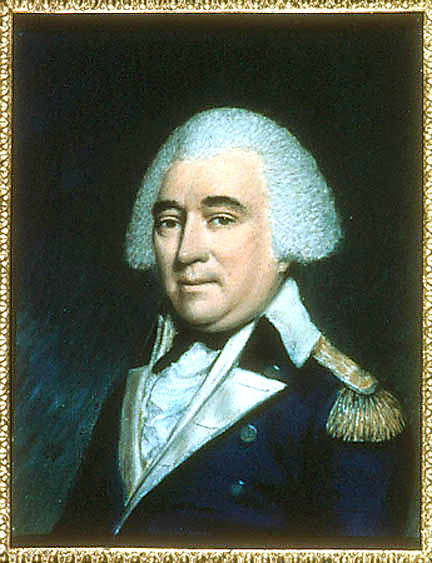
 |
|||||||||||
| ANTHONY WAYNE 1745-1796 James Sharples, Sr., from life, 1796 Pastel on paper. H 9, W 7 in (H 22.9, W 17.8 cm) Independence NHP INDE 11922
|
|||||||||||
|
About this Portrait:
British pastelist James Sharples, Sr. (1751-1811) probably painted his portrait of Wayne in June of 1796 before the commander left Philadelphia for his post in Detroit. Sharples later listed General Waine among his subjects in a catalog published upon the artist's return to England. At one time, this portrait was misidentified as that of James Wilkinson. Recent scholarship compared this pastel with other life portraits of Wayne and Wilkinson, and corrected the indentification. Listed in the 1802 Bath catalog of Sharples's work. Given by Ellen (Mrs. James) Sharples to Felix Sharples in 1811. Given by Felix Sharples to Levin Yardly Winder in the 1830s. Inherited by Nathaniel James Winder from Levin Yardly Winder. Inherited by Richard Bayly Winder from Nathaniel James Winder in 1844. Purchased by Murray Harrison from Richard Bayly Winder around 1865. Purchased by the City of Philadelphia from Murray Harrison in 1875. |
|||||||||||
|
|
||
|
Note: Prev/next are in alphabetic order within their respective theaters. |
||
Last Modified: